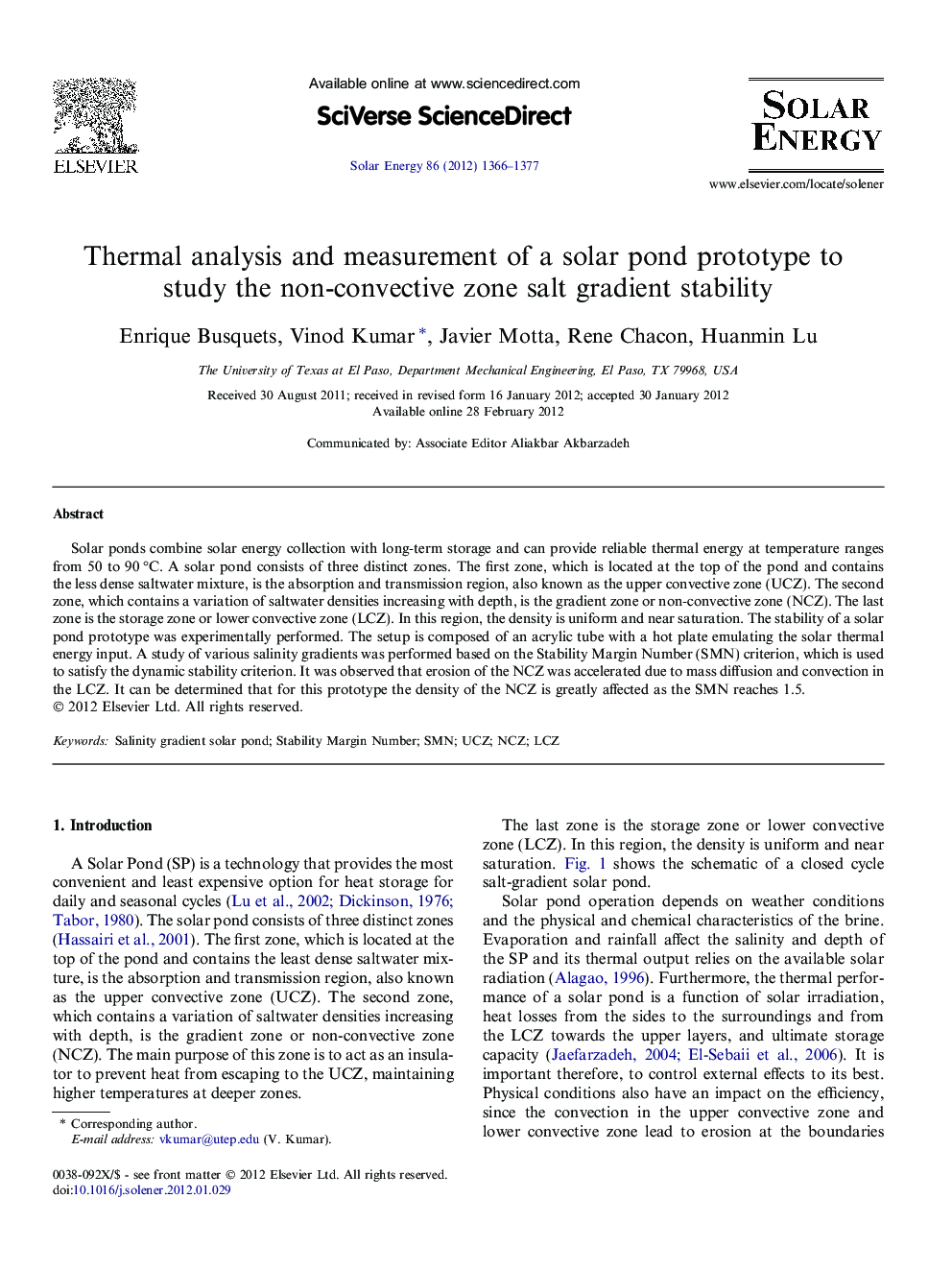| Article ID | Journal | Published Year | Pages | File Type |
|---|---|---|---|---|
| 1551079 | Solar Energy | 2012 | 12 Pages |
Solar ponds combine solar energy collection with long-term storage and can provide reliable thermal energy at temperature ranges from 50 to 90 °C. A solar pond consists of three distinct zones. The first zone, which is located at the top of the pond and contains the less dense saltwater mixture, is the absorption and transmission region, also known as the upper convective zone (UCZ). The second zone, which contains a variation of saltwater densities increasing with depth, is the gradient zone or non-convective zone (NCZ). The last zone is the storage zone or lower convective zone (LCZ). In this region, the density is uniform and near saturation. The stability of a solar pond prototype was experimentally performed. The setup is composed of an acrylic tube with a hot plate emulating the solar thermal energy input. A study of various salinity gradients was performed based on the Stability Margin Number (SMN) criterion, which is used to satisfy the dynamic stability criterion. It was observed that erosion of the NCZ was accelerated due to mass diffusion and convection in the LCZ. It can be determined that for this prototype the density of the NCZ is greatly affected as the SMN reaches 1.5.
► The stability of a solar pond prototype is experimentally performed. ► An acrylic tube with a hot plate is used to emulate the solar thermal energy input. ► A study of various salinity gradients was performed based on SMN criterion. ► It was found that the density of the NCZ is greatly affected near SMN equals 1.5.
